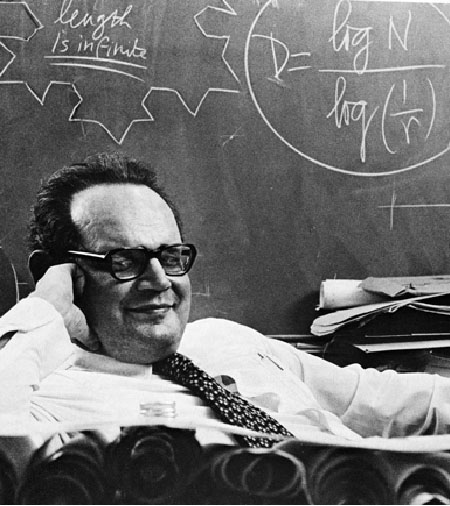SciTech Tuesday: Celebrating the Father of Fractals

Benoît Mandelbrot in 1975. Photo from I.B.M.
Today marks the 88th birthday of Benoît Mandelbrot, renowned for his work with fractals and the fascinating mathematics of art and nature. Mandelbrot was born in Warsaw, Poland in 1924 to a Jewish family. They fled Poland in 1936 ahead of the advances of Nazi Germany. On the run in wartime France, the teenage Mandelbrot turned to mathematics as an intellectual retreat from the threats and dangers of war.
Influenced by his tumultuous childhood experience during WWII, the young mathematician was fascinated by unpredictable phenomena, describing the roughness of nature with a simple repeating mathematical formula. Mandelbrot first used the term “fractal” in 1975 to refer to irregular shapes that repeat in a never ending pattern. The famous Mandelbrot set describes the order found in disorder and can be applied to a vast array of disciplines from economics to medicine.
Describing himself as a philosopher “entranced with unifying ideas,” Mandelbrot connected phenomena previously thought to be anomalies of mathematics. Examples of fractal geometry found in nature include cloud formations, the repeating human heartbeat, snowflakes, ocean waves, coastlines, the branching pattern of blood vessels, and the folding of DNA. Mandelbrot’s fractal patterns have numerous technological applications from the shape of antennas to diagnostic imaging in medicine. Benoît Mandelbrot died in hospice care in Cambridge, Massachusetts on October 14, 2010. His memoir, The Fractalist, was released posthumously last month.
Post by Annie Tête, STEM Education Coordinator
Join us in 2013 for The National WWII Museum Robotics Challenge!




Leave a Reply